Learn how to reset location, privacy, handwriting, Home Screen layout, cellular plan, keyboard, network, and all settings on your iPhone and iPad to troubleshoot various related issues.

There are eight reset options on iPhone and iPad if you include Erase All Content and Settings. All these reset options are not meant for everyday use. You must go through with them only when something isn’t going right, and other fixes, such as force quitting apps, restarting, force restarting, setting the correct date & time, and updating software, have failed to solve the problem on your iPhone or iPad.
After resetting a particular setting, your iPhone loses the respective customizations and returns to the default settings — just like when you got your new iPhone out of the box (or after a full erase).
Before you begin
- Except for Erase All Content and Settings, no other reset option deletes your music, photos, videos, apps, app data, files, documents, and other such personal stuff.
- Still, you must back up your iPhone or iPad. This will ensure that if, in a rare, unfortunate event, your device doesn’t restart or bricks after the reset, you have a backup to restore to and get all data back. Even if you do not have sufficient iCloud space, you can make a full, temporary backup.
- Make sure you know the device passcode and Apple ID password. Depending on which reset you choose, you will have to enter these if asked.
Reset your iPhone and iPad settings

- Open the Settings app and tap General.
- Scroll to the bottom and tap Transfer or Reset iPhone.
- You have two options: Reset and Erase All Content and Settings. We already have a detailed guide that shows you how to erase everything on your iPhone, iPad, or iPod touch. So, in this post, let’s focus only on the former.
- Start by tapping Reset, which has seven reset options (explained below).
- Tap one of the reset options, enter the iPhone passcode, read the message you see in the slide-up menu, and confirm that you want to proceed.
As mentioned, we’ve explained more about all the reset options below. You should go through it before hitting the confirm button.
Reset Location & Privacy
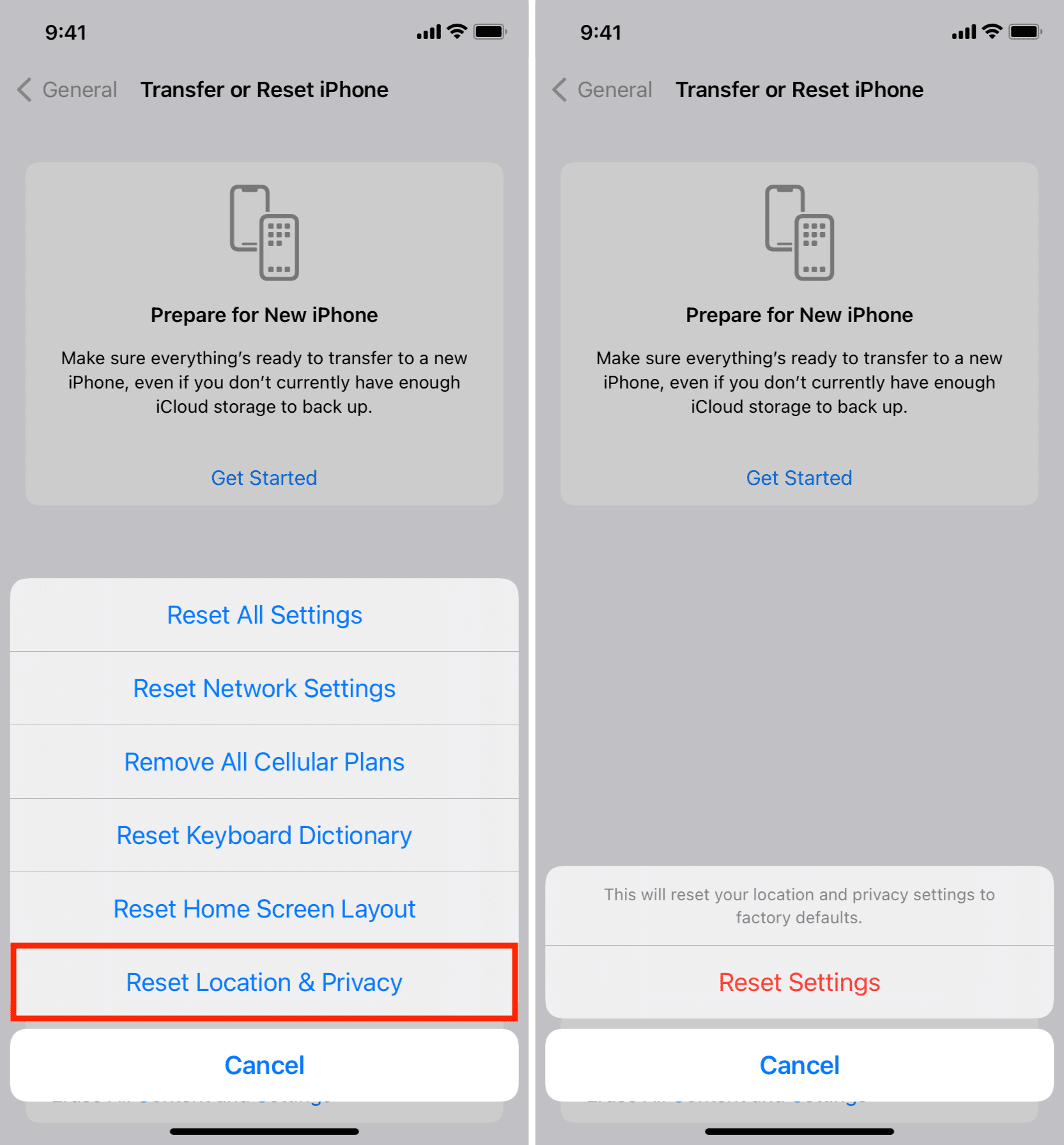
This resets the location and privacy settings to default. After proceeding with this option, go to the Settings app > Privacy & Security and make the desired changes. One of the most important is Location Services. If you do not enable it, you can’t use apps like Uber, food delivery, maps, weather, and more.
Also, after resetting location and privacy settings, when you open apps, they may show popups to access your photos, microphone, camera, etc. Allow them as required.
Reset Handwriting Style

If you’ve updated your iPhone or iPad to iOS 18 or iPadOS 18 and later, you will see the option to reset your Handwriting Style. Once you do that, your phone will forget the way you write with your finger and Apple Pencil in Notes and other apps.
Reset Home Screen Layout
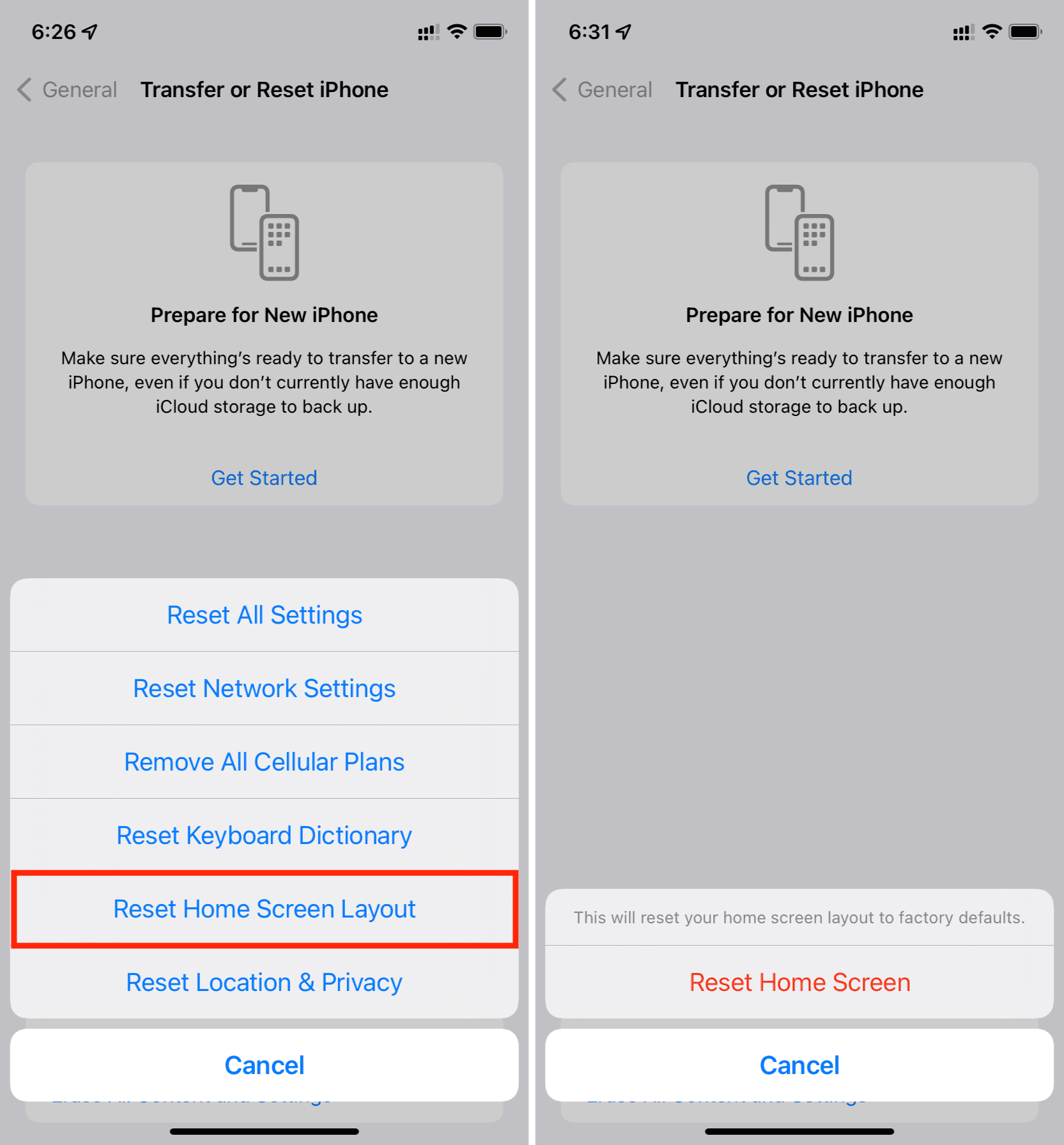
Not everyone is an expert in organizing their iPhone Home Screen. As a result, at times, you cannot find apps and think they are hidden.
One of the solutions to fix this annoyance is to reset your Home Screen app layout, which will reorganize how apps and widgets are placed on your iPhone Home Screen.
After this, the apps on your first iPhone Home Screen page and the Dock will go back to their original layout. In other words, they will look like the day you bought your new iPhone. The top portion of the second Home Screen page will have the remaining Apple apps and folders. Below that (from the second Home Screen page onwards), all your downloaded apps will be arranged alphabetically.
The following tutorials will come in handy after you have reset the Home Screen layout:
- How to create and manage folders on iPhone
- Steps to move multiple apps at once on iPhone and iPad
- How to move apps in and out of the App Library
Reset Keyboard Dictionary
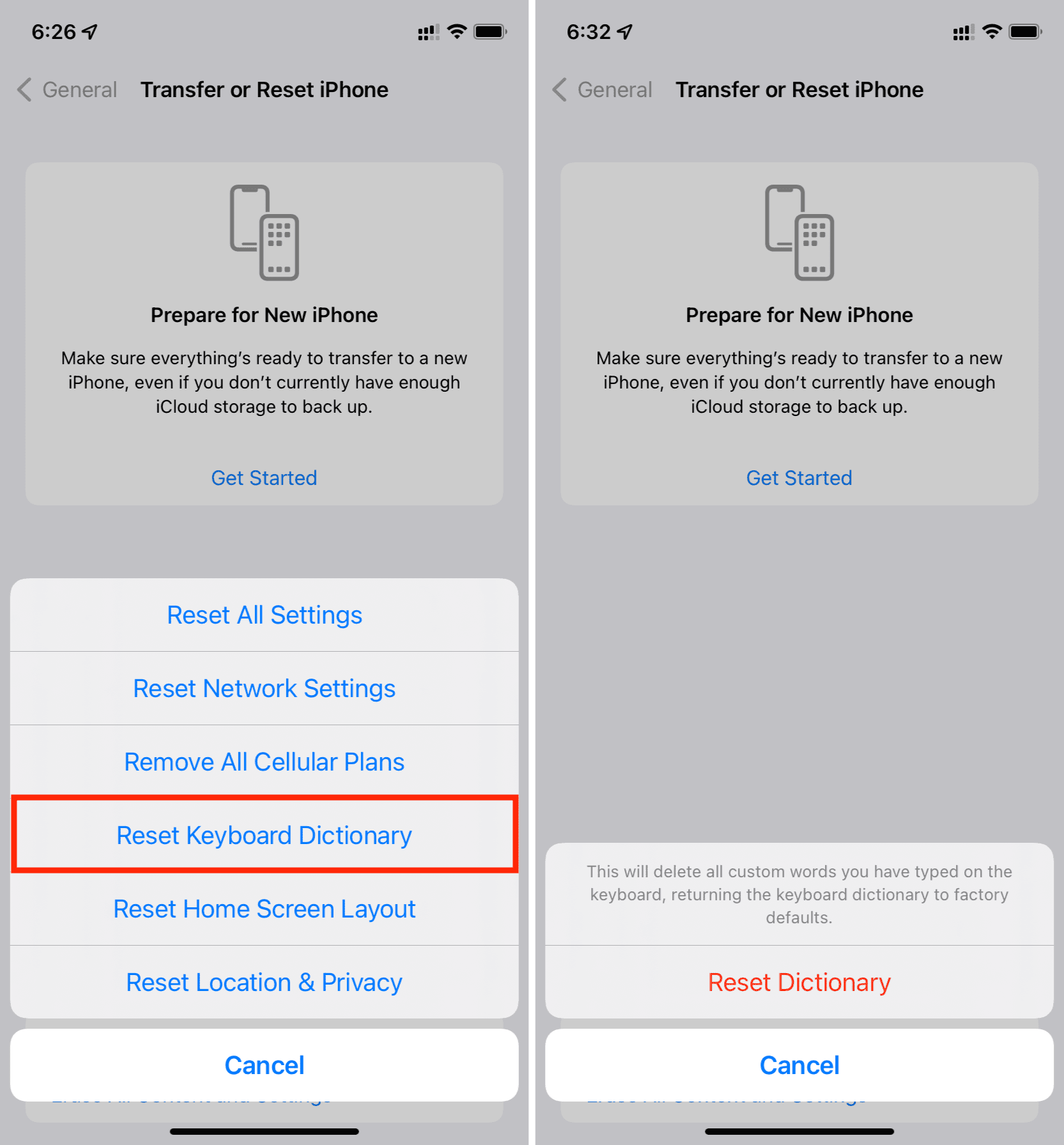
Resetting the keyboard dictionary will erase all the custom words you have typed and added to the iPhone dictionary. Apple says, “You add words to the keyboard dictionary by rejecting words iPhone suggests as you type.”
Note: As mentioned, it only erases the custom words your keyboard has learned from your typing. It doesn’t change the keyboard settings or delete the Text Replacement phrases.
Delete All eSIMs
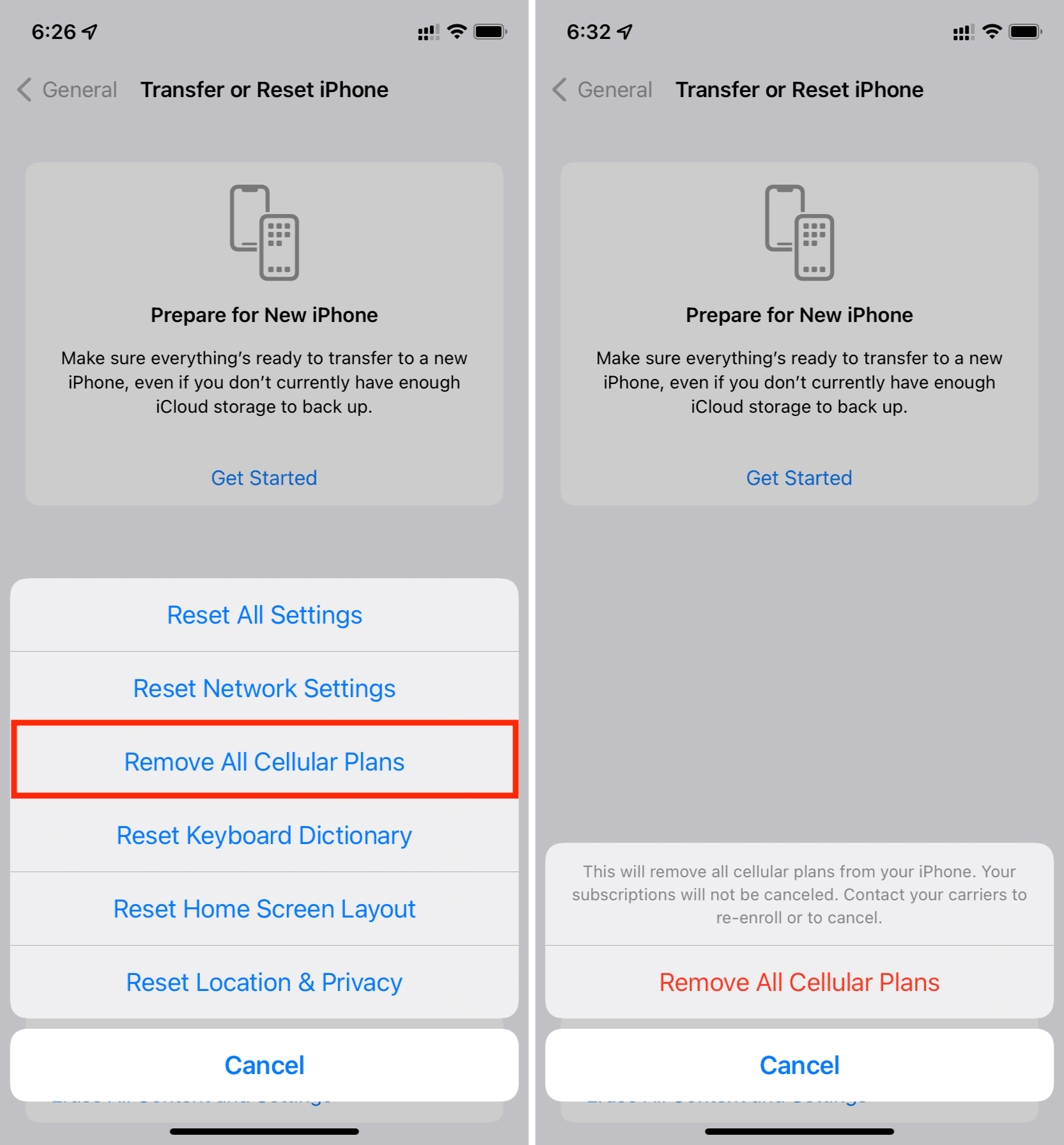
This option can be known by different names, such as Delete All eSIMs, Remove All Cellular Plans, and Subscriber Services.
If you use eSIM on your iPhone, you will get the option to Delete All eSIMs. If you don’t use eSIM, you may not see this option.
Tap Delete All eSIMs or Remove All Cellular Plans and proceed with this option only when you want to erase your eSIM. Situations when you may like to erase your eSIM are:
- You want to stop using eSIM.
- You want to use an eSIM from a different carrier on your relatively older iPhone.
- Or, you are selling or giving away your iPhone to someone.
Note:
- Erasing eSIM from your iPhone doesn’t stop/disconnect your cellular plan. For this, you must contact your carrier.
- If you want to transfer an eSIM from your current iPhone to another, follow your carrier instructions to set up eSIM on the new iPhone. Once it’s activated on the new iPhone, the plan on your old iPhone will automatically deactivate.
- Even when you erase everything on your iPhone, you’re offered the option to keep or delete your cellular plans.
Reset Network Settings
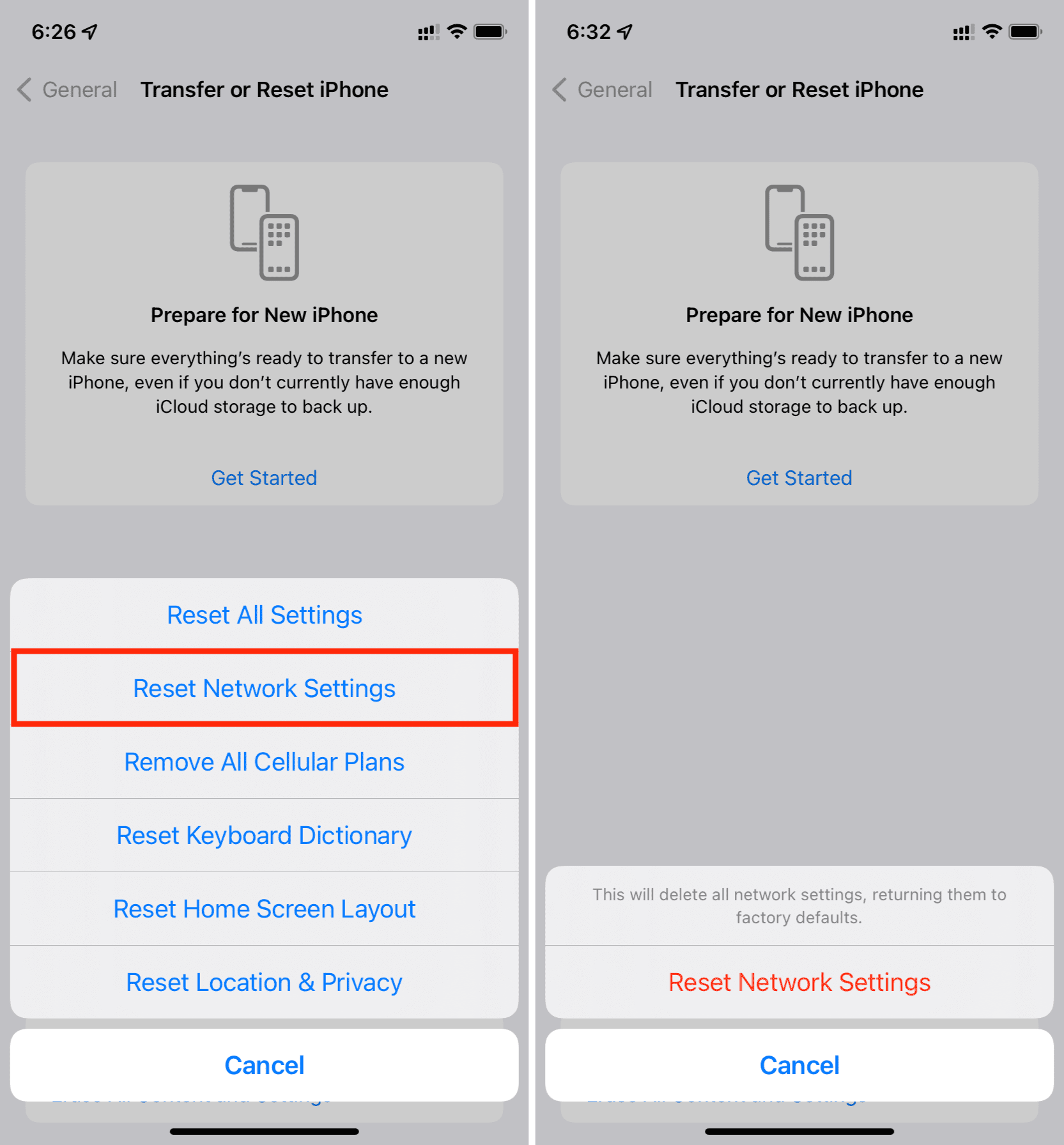
This affects iPhone network settings like Wi-Fi, Bluetooth, cellular settings, VPN, and such. However, as mentioned, it won’t delete personal data.
When updates fail, or cellular data and Wi-Fi do not work, devices can’t connect to iPhone’s Bluetooth, and you face similar problems while accessing the web, resetting network settings will help.
After the reset of network settings is complete, open the iPhone Settings app to join a Wi-Fi network and pair your Bluetooth devices.
Reset All Settings
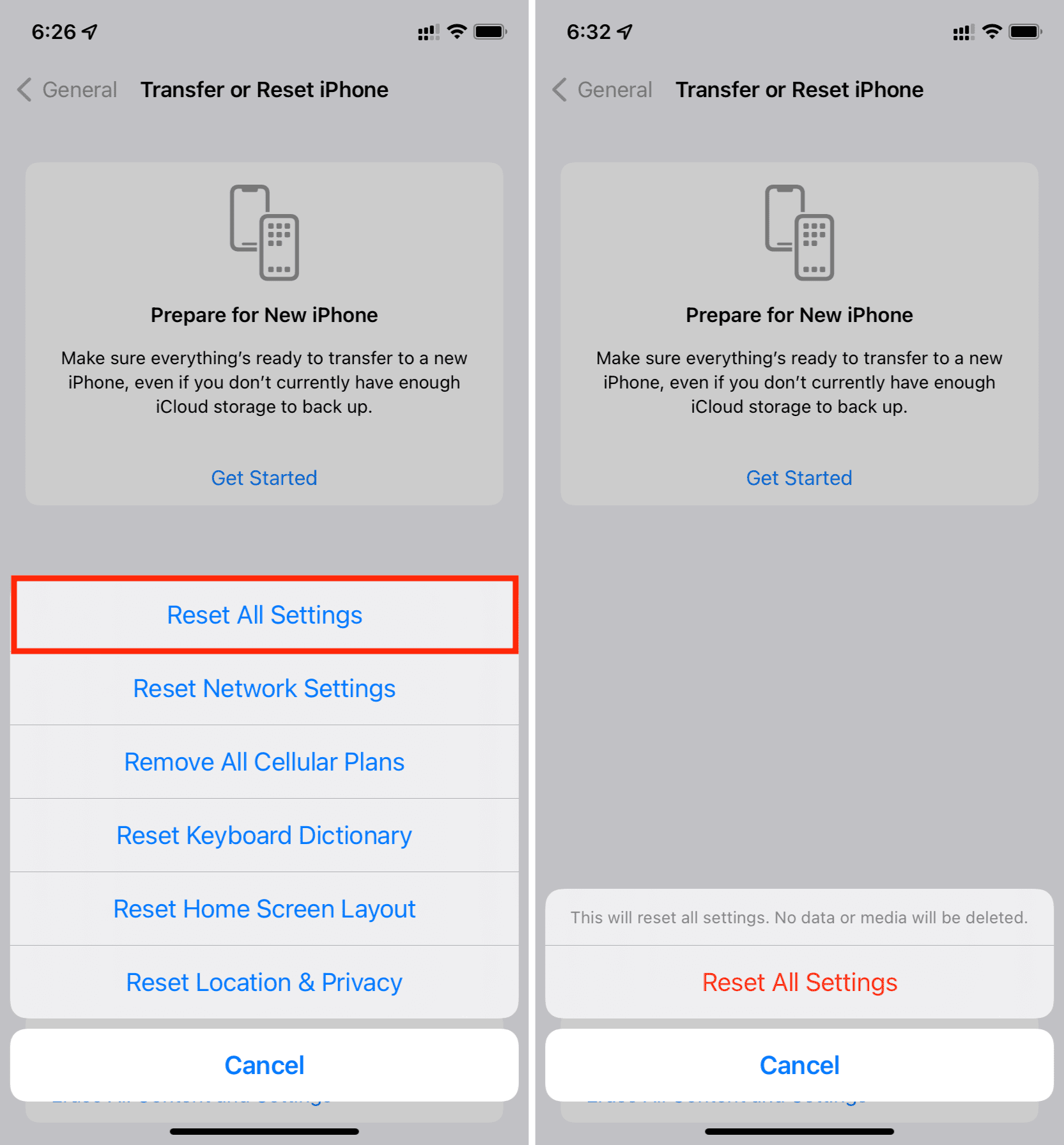
Finally, this is the mother of all resets we talked about above. Once you reset all settings, every setting on your iPhone that you have changed or added will default to the factory settings.
It would be best if you do this only in rare cases. After resetting all settings, you will have to open each app manually, and then they will show you the popup to send notifications, access contacts, camera, microphone, photos, and more. So, if you have some essential apps, make sure you open them after resetting all settings and attend to the popup alerts they show.
Check out next: